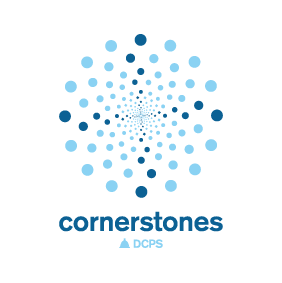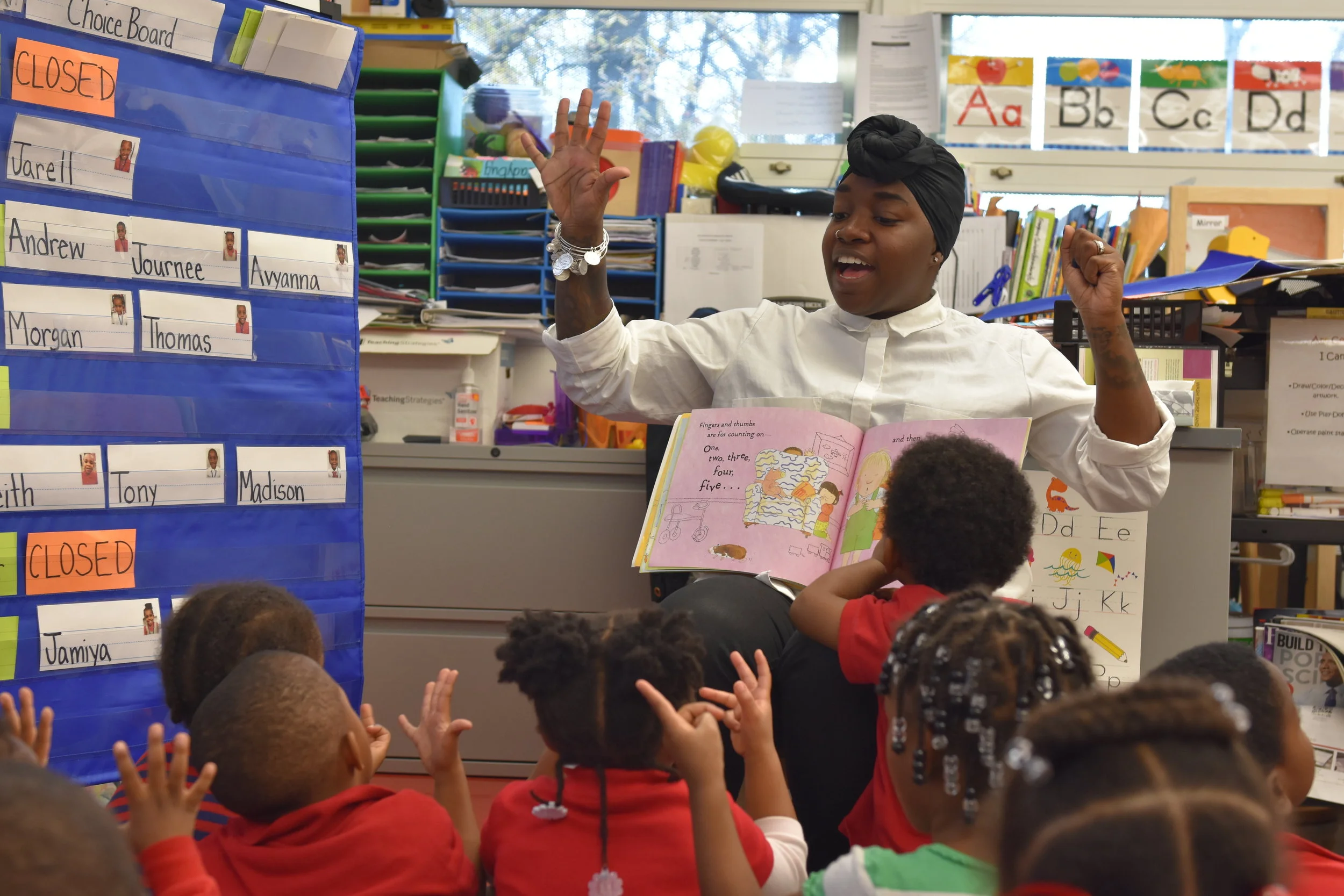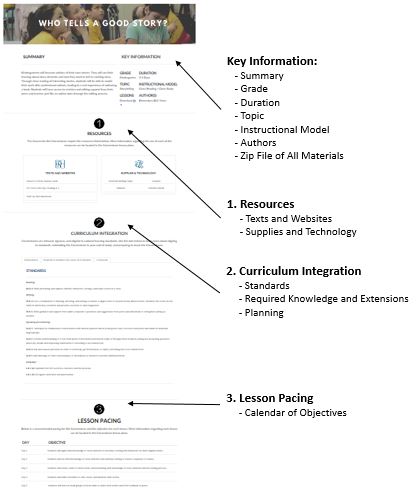Anatomy of a Cornerstone
Each Cornerstone contains rich content and high impact instructional models, and culminates in a high-quality student work product or performance. Learn more about high impact instructional models below, and explore the rich content across content areas by selecting any subject to view sample Cornerstones.
High Impact Instructional Models
Each Cornerstone features at least one High Impact Instructional Model. Teachers develop expertise in utilizing these models through the delivery of Cornerstones, and can then apply these skills to learning experiences throughout their curriculum. All Cornerstones featured on content team pages are tagged by instructional model, and descriptions of these models are below.
Close Reading / Close Study
Close Reading of text involves an investigation of a short piece of text, with multiple readings done over multiple instructional lessons. Through text-based questions and discussion, students are guided to deeply analyze and appreciate various aspects of the text. The teacher’s goal in the use of Close Reading is to gradually release responsibility to students—moving from an environment where the teacher models for students the strategies to one where students employ the strategies on their own when they read independently.
Close Reading does more than advance reading development; it is a mechanism for teaching about logical arguments and critiquing the reasoning of others, for gleaning evidence from text and applying critical thinking skills. Close Reading cannot be reserved for students who already are strong readers; it should be a vehicle through which all students grapple with advanced concepts and participate in engaging discussions regardless of their independent reading level.
Sheila Brown and Lee Knapes, “Implementing the Common Core State Standards: A Primer on Close Reading of Text”
Inquiry / 5E
The 5E Instructional Model is based upon cognitive psychology, constructivist-learning theory, and best practices in science teaching. The cycle consists of cognitive stages of learning that comprise engage, explore, explain, elaborate, and evaluate. Bybee declares that “using this approach, students redefine, reorganize, elaborate, and change their initial concepts through self-reflection and interaction with their peers and their environment. Learners interpret objects and phenomena, and internalize those interpretations in terms of their current conceptual understanding". Science teachers and curriculum developers may integrate or apply the model at several levels.
Lena Ballone Duran and Emilio Duran, “The 5E Instructional Model: A Learning Cycle Approach for Inquiry-Based Science Teaching”
Project - Based Learning
In a project-based approach, students work over an extended time period for a purpose beyond satisfying a school requirement – to build something, to create something, to respond to a question they have, to solve a real problem, or to address a real need.
- Project-based approaches are particularly well suited to addressing the Common Core State Standards for English Language Arts and Literacy in History/Social Studies, Science, and Technical Subjects.
- The skills entailed in project-based learning are consistent with the so called “21st century skills,” skills that are in demined for work and citizenship, such as those identified by the Partnership for 21st Century Skills.
- Research is increasingly showing that project-based approaches, and their components, improve students’ knowledge, skills, and attitudes toward learning.
- Project-based approaches are more engaging than many traditional kinds of instruction,. Although motivation and engagement in schooling have always been important, they are more important than ever. Standards expect much more from students than in the past – to get students to engage in the hard, cognitive work necessary to meet these demanding standards, they need to be motivated and engaged in their learning.
Nell K. Duke, Inside Information
Paideia Seminar / Rich Academic Discussion
Paideia Seminar is an approach to Socratic seminar that is rooted in the Paideia method of education, which encourages active learning. A Paideia Seminar is a collaborative, intellectual dialogue facilitated with open-ended questions about a text. Paideia Seminar centers on a text that is a tangible human artifact — such as a poem, a painting, a song, or a science experiment. By focusing on a specific text, Paideia Seminar creates an entry point to engage students with more abstract ideas. Focusing on a text also creates opportunities to explore profound and influential texts within an academic discipline.
National Paideia Center
Modeling
Modeling links classroom mathematics and statistics to everyday life, work, and decision-making. Modeling is the process of choosing and using appropriate mathematics and statistics to analyze empirical situations, to understand them better, and to improve decisions. A model can be very simple, such as writing total cost as a product of unit price and number bought, or using a geometric shape to describe a physical object like a coin. Even such simple models involve making choices. Real-world situations are not organized and labeled for analysis; formulating tractable models, representing such models, and analyzing them is appropriately a creative process. Like every such process, this depends on acquired expertise as well as creativity.
Common Core State Standards Initiative



